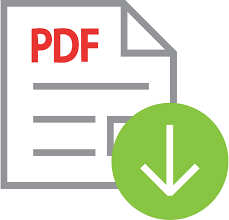Systematic Literature Review of Augmented Reality and Virtual Reality Implementation in Digital Learning
 ), Abdurrahman Niarman(2), Elsa Rahmayanti(3),
), Abdurrahman Niarman(2), Elsa Rahmayanti(3), (1) Universitas Negeri Padang
(2) Universitas Islam Negeri Mahmud Yunus Batusangkar
(3)
 Corresponding Author
Corresponding Author
DOI : https://doi.org/10.24036/et.v11i1.126167
Full Text:
 Language : id
Language : id
Abstract
References
Cerqueira, C. S., & Kirner, C. (n.d.). Developing Educational Applications with a Non-Programming Augmented Reality Authoring Tool.
Elmqaddem, N. (2019). Augmented Reality and Virtual Reality in Education. Myth or Reality? International Journal of Emerging Technologies in Learning (iJET), 14(03), 234. https://doi.org/10.3991/ijet.v14i03.9289
George, K., Anastasios, M. T., Dimitrios, M., & Christos, C. (2023). The mobile augmented reality acceptance model for teachers and future teachers. Education and Information Technologies. https://doi.org/10.1007/s10639-023-12116-6
Geroimenko, V. (Ed.). (2020). Augmented Reality in Education: A New Technology for Teaching and Learning. Springer International Publishing. https://doi.org/10.1007/978-3-030-42156-4
Kaur, D. P., Mantri, A., & Horan, B. (2020). Enhancing Student Motivation with use of Augmented Reality for Interactive Learning in Engineering Education. Procedia Computer Science, 172, 881–885. https://doi.org/10.1016/j.procs.2020.05.127
Kok, D. L., Dushyanthen, S., Peters, G., Sapkaroski, D., Barrett, M., Sim, J., & Eriksen, J. G. (2022). Virtual reality and augmented reality in radiation oncology education – A review and expert commentary. Technical Innovations & Patient Support in Radiation Oncology, 24, 25–31. https://doi.org/10.1016/j.tipsro.2022.08.007
Neumann, D. L., Neumann, M. M., & Hood, M. (2011). Evaluating computer-based simulations, multimedia and animations that help integrate blended learning with lectures in first year statistics. Australasian Journal of Educational Technology, 27(2). https://doi.org/10.14742/ajet.970
Osorto Carrasco, M. D., & Chen, P.-H. (2021). Application of mixed reality for improving architectural design comprehension effectiveness. Automation in Construction, 126, 103677. https://doi.org/10.1016/j.autcon.2021.103677
Rizov, T., & Rizova, E. (2015). AUGMENTED REALITY AS A TEACHING TOOL IN HIGHER EDUCATION. International Journal of Cognitive Research in Science, Engineering and Education, 3(1), 7–15. https://doi.org/10.23947/2334-8496-2015-3-1-7-15
Saidin, N. F., Abd Halim, N. D., & Yahaya, N. (2015). A Review of Research on Augmented Reality in Education: Advantages and Applications. International Education Studies, 8(13), p1. https://doi.org/10.5539/ies.v8n13p1
Urlings, J., Sezer, S., Ter Laan, M., Bartels, R., Maal, T., Boogaarts, J., & Henssen, D. (2022). The role and effectiveness of augmented reality in patient education: A systematic review of the literature. Patient Education and Counseling, 105(7), 1917–1927. https://doi.org/10.1016/j.pec.2022.03.005
Vega Garzón, J. C., Magrini, M. L., & Galembeck, E. (2017). Using augmented reality to teach and learn biochemistry. Biochemistry and Molecular Biology Education, 45(5), 417–420. https://doi.org/10.1002/bmb.21063
Zhou, X., Tang, L., Lin, D., & Han, W. (2020). Virtual & augmented reality for biological microscope in experiment education. Virtual Reality & Intelligent Hardware, 2(4), 316–329. https://doi.org/10.1016/j.vrih.2020.07.004
 Article Metrics
Article Metrics
 Abstract Views : 467 times
Abstract Views : 467 times
 PDF (Bahasa Indonesia) Downloaded : 71 times
PDF (Bahasa Indonesia) Downloaded : 71 times
Refbacks
- There are currently no refbacks.





